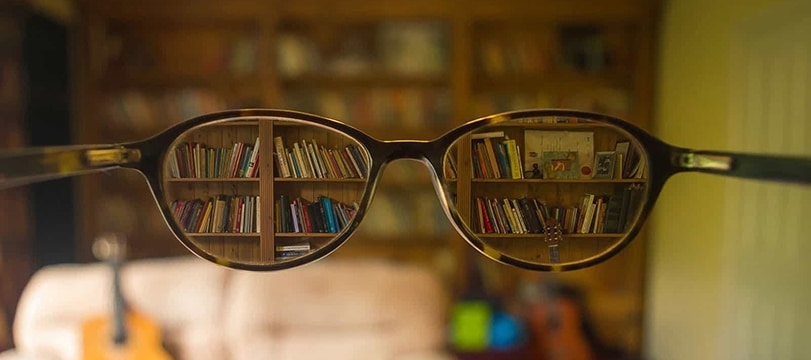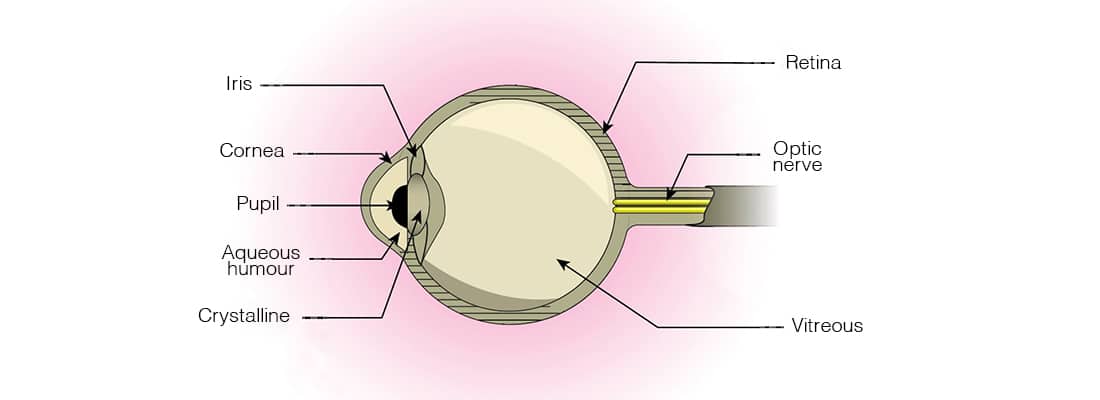
02:47 -
Researchers from the University of Stanford have released new findings on autofocus glasses for presbyopic (aging) eyes, which will allow the wearer to see clearly and refocus their eyesight in real time, no matter what the lighting conditions, weather conditions or speed of their eye movement. Here we explain how autofocus glasses are promising to be an alternative to glasses wearers. Offering a life-changing solution to their day-to-day vision, this technology could help huge numbers of so-called presbyopes, of which it is estimated there will be over 1.8 billion by 2050.
The human eye has two natural converging lenses: the cornea and the crystalline. The latter works like the autofocus function on a camera: the image formed on the retina stays focused whatever the distance or movement of the object being examined. As we get older however, the crystalline lens loses its elasticity and its ability to focus deteriorates. It is perhaps unsurprising then that the etymological origin of the word ‘presbyope’ comes from the Greek word ‘presbus’, which means ‘old’. A recent study estimates that at least 1.8 billion people will suffer from presbyopia by 2050. Less ‘old’, but maybe a little wise, however, this demographic starts being registered from the age of 45.

© santé-médecine.net
To remedy this kind of defective vision, which effects on average 600,000 people in France alone every year, the most common solution is to wear reading glasses or progressive lenses. However, these options are not without their downsides, as most presbyopes will probably be aware. If you wear reading glasses, they have to be taken off or lowered whenever you want to see things that are further away, and the use of progressive lenses require time to adjust and so cannot necessarily quickly adapt for quick, extreme movements of the and for one’s peripheral vision, which is particularly important if you are driving.
Analysing the eyes of numerous presbyopes and future presbyopes, this is the question that the research of Nitish Padmanaban, Robert Konrad and Gordon Wetzstein, three engineers from the University of Stanford, tries to answer. Published at the end of June 2019, their research was partly financed by large tech companies such as Intel and Nvidia, and their findings propose autofocus lenses as a convincing alternative to progressive lenses. As one of the co-authors of the article claims: ‘more than a billion people currently suffer from presbyopia, and we have created a pair of autofocal lenses which could one day correct the vision of these people far more effectively than conventional lenses.’
For their research, they created lenses that use eye-tracking technology which can follow the precise movements of the pupils, constantly redetermining which area is being examined and the distance of this from the wearer of the glasses. This is calculated by an inbuilt software and the lenses are filled with a fluid that reacts to an electric current and processes the adjustment in the lens. These liquid glass lenses work in a similar way to the anatomical crystalline lens does: when the field of vision changes, the lenses are get inflate or shrink, dilate or retract, even becoming more or less thick as the focalisation changes in real time.

Following a series of tests using their prototype on 56 volunteers, their research overwhelmingly found that, in contrast to when they used progressive lenses, autofocus lenses would allow the user to carry out a wide range of daily tasks much more quickly and effectively. Wearing these glasses not only allowed them to enjoy a better clarity of vision, whatever the distance being examined, but they also praised the speed of re-focalisation compared to their normal glasses.
The technology proposed by this research from Stanford is not their completely original invention. As we have previously reported here, autofocus glasses have been proposed by the Belgiun company Morrow Optics. But unlike those being used by Stanford, which automatically adjust, theirs require the wearer to press a button. The Israeli start-up Deep Optics used to offer a model relatively similar to those offered by the Stanford scientists, but the business stopped advertising this model three years ago. Combining eye-tracking technology with autofocus lenses, the American researchers have not only found a comprehensive, scientifically-rigorous solution to presbyopia, but they are also the first to have tested such a prototype in a way that is promising for the future.
Currently, their model is still sadly only a prototype and so not available for everyday wear. Furthermore, because of the technology they use they are also bulky, and, not dissimilar to a virtual reality mask, the discomfort factor was widely noted in their study. The next stage in their research will be to reduce the size of the frames so they are more comfortable and appropriate for day-to-day use. Whilst the researchers believe it will be several years before a lightweight, eco-conscious and stylish model will be commercially available, they are still convinced that autofocus lenses are the future of optical correction. In the words of Gordon Wetzstein, one of the scientists on the experiment: ‘in time, this technology could change the lives of billions of people across the world, as have some of the most important inventions of our time.’